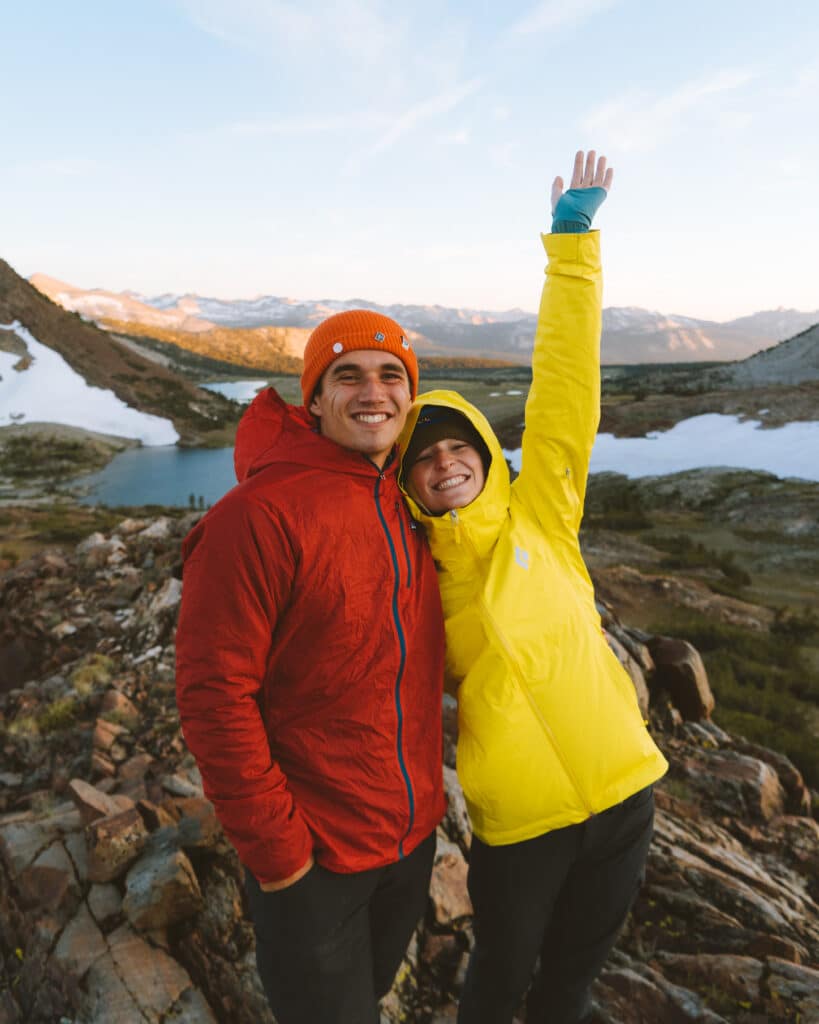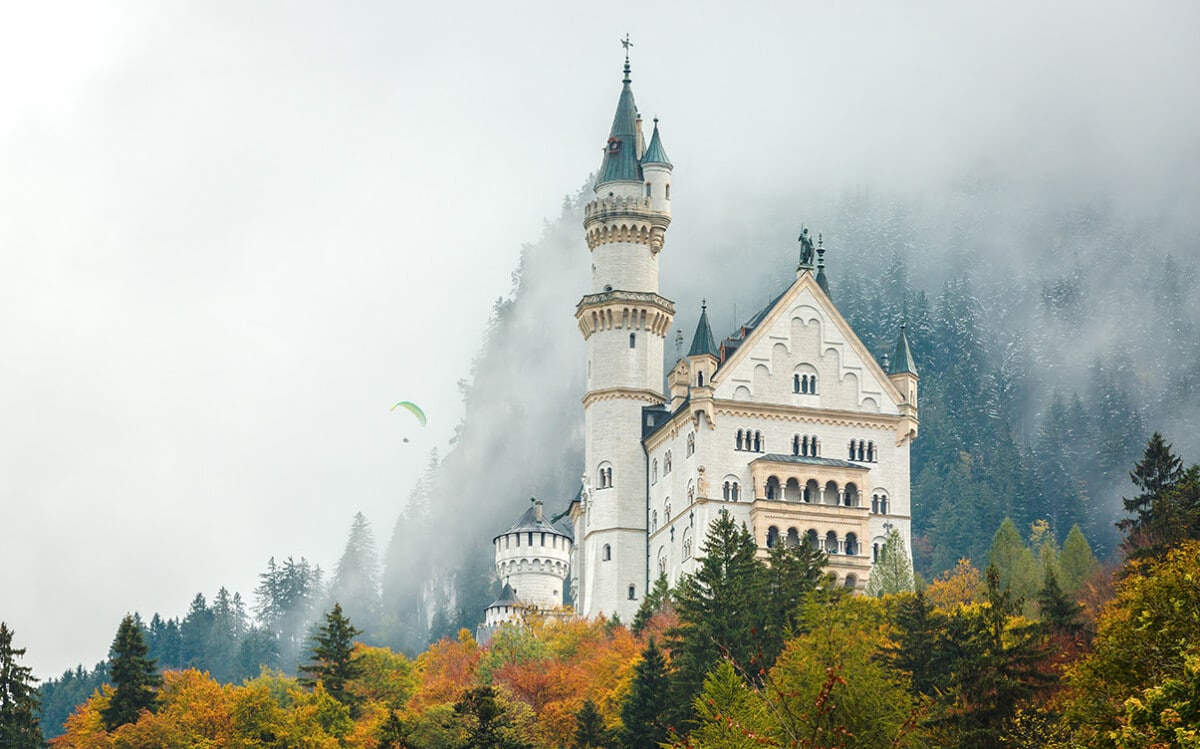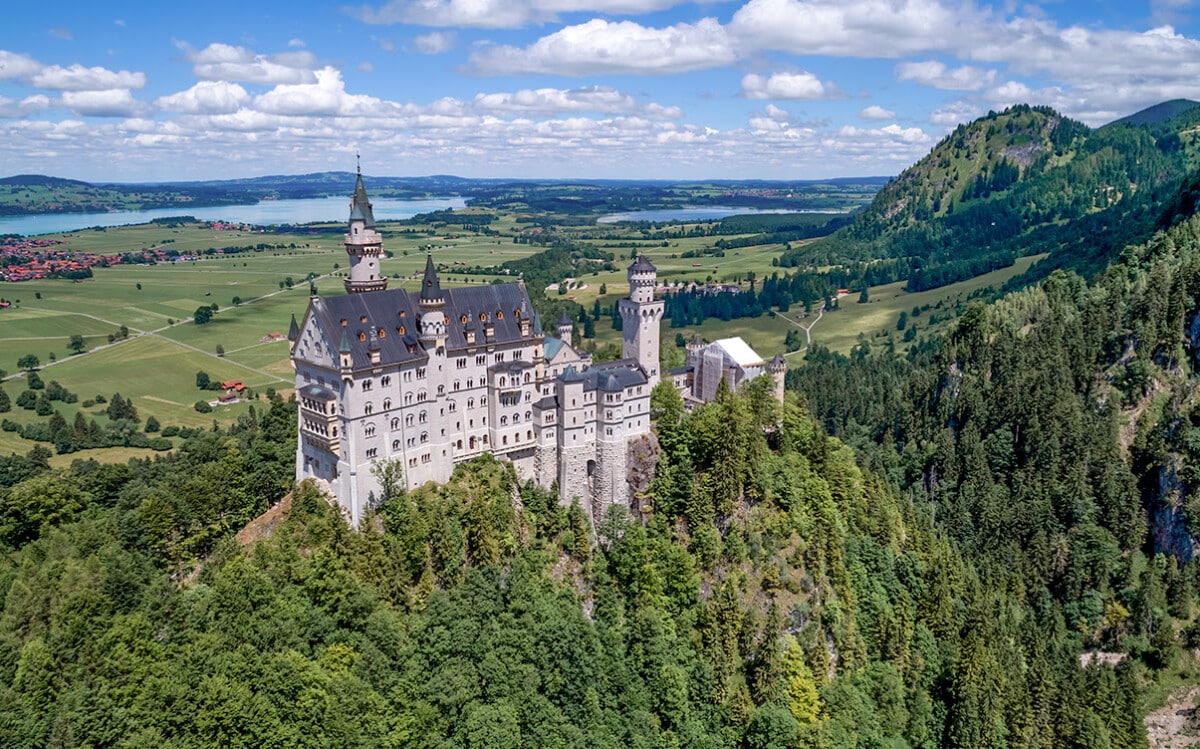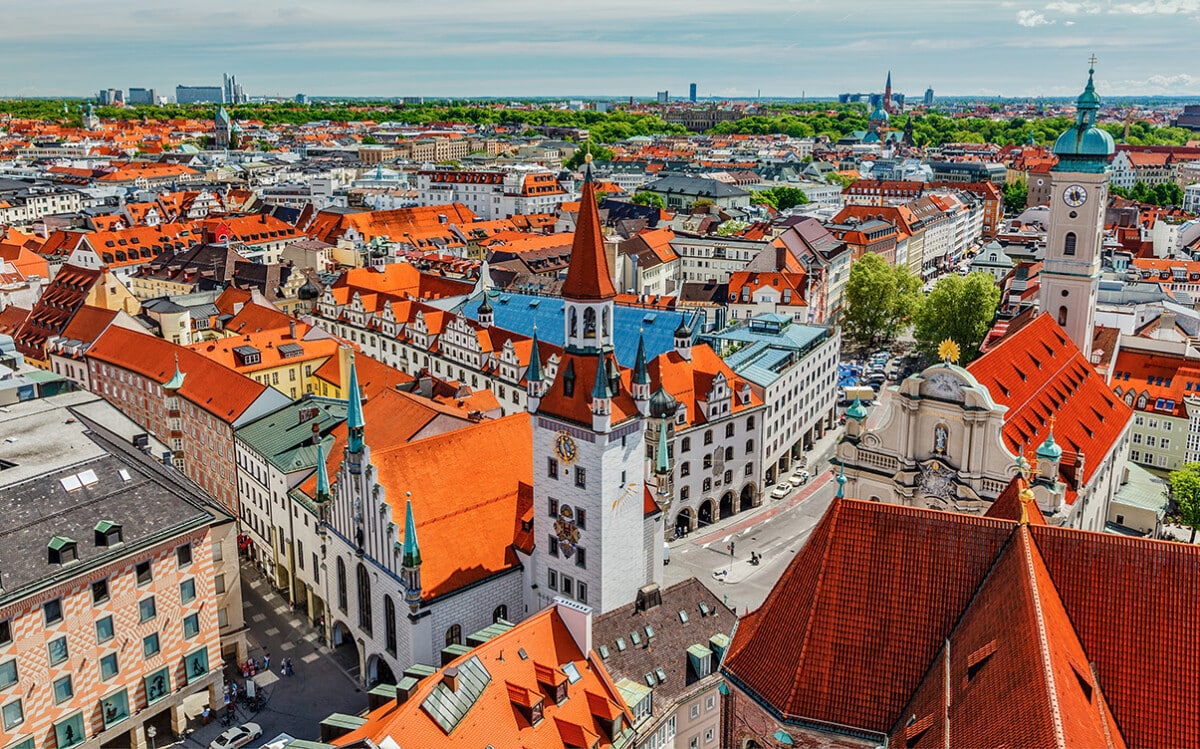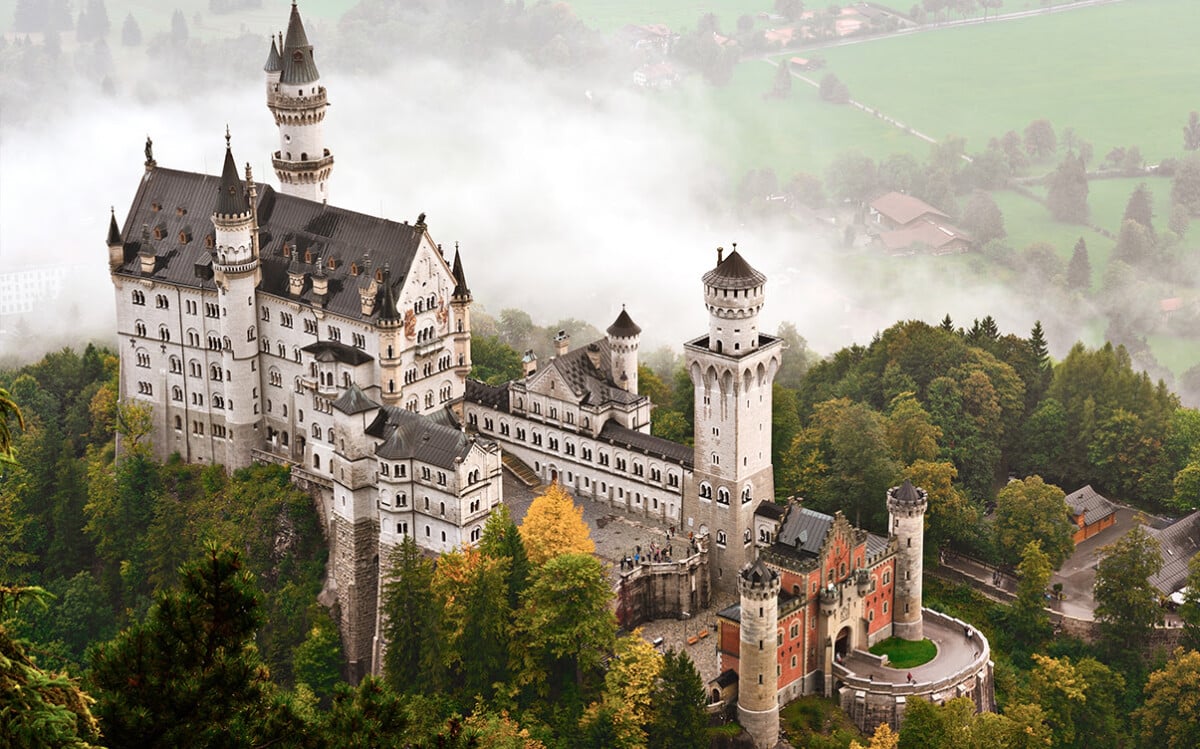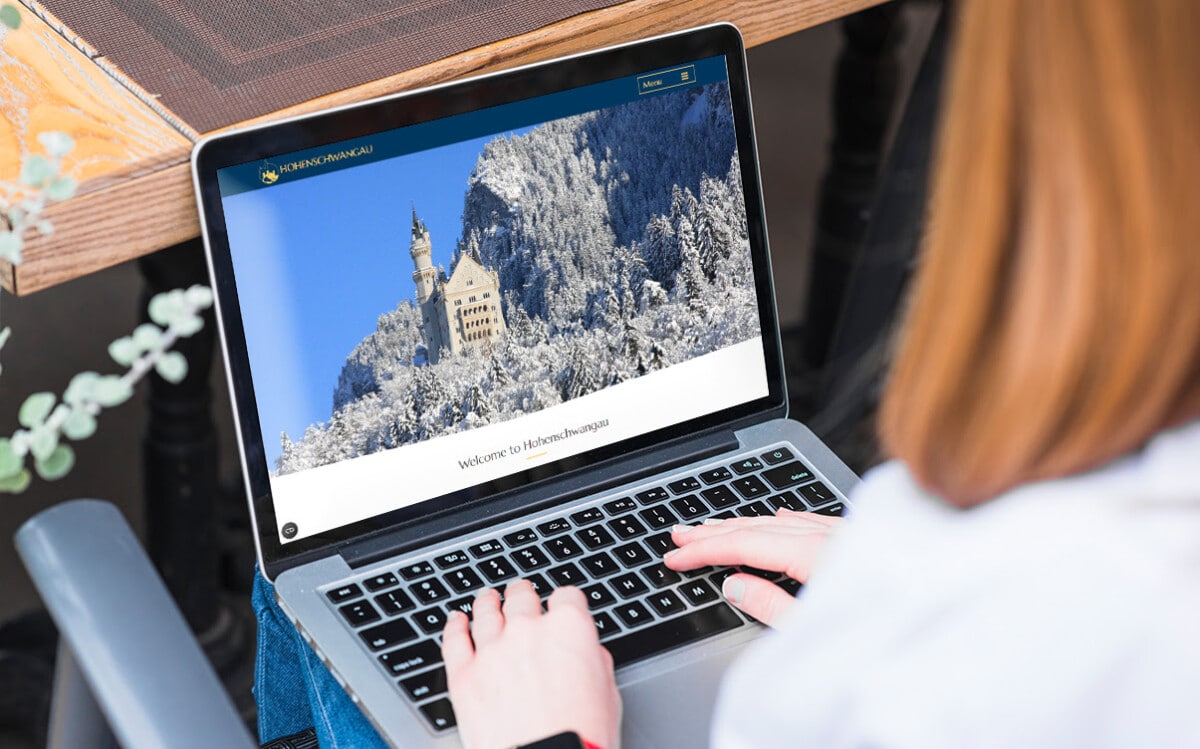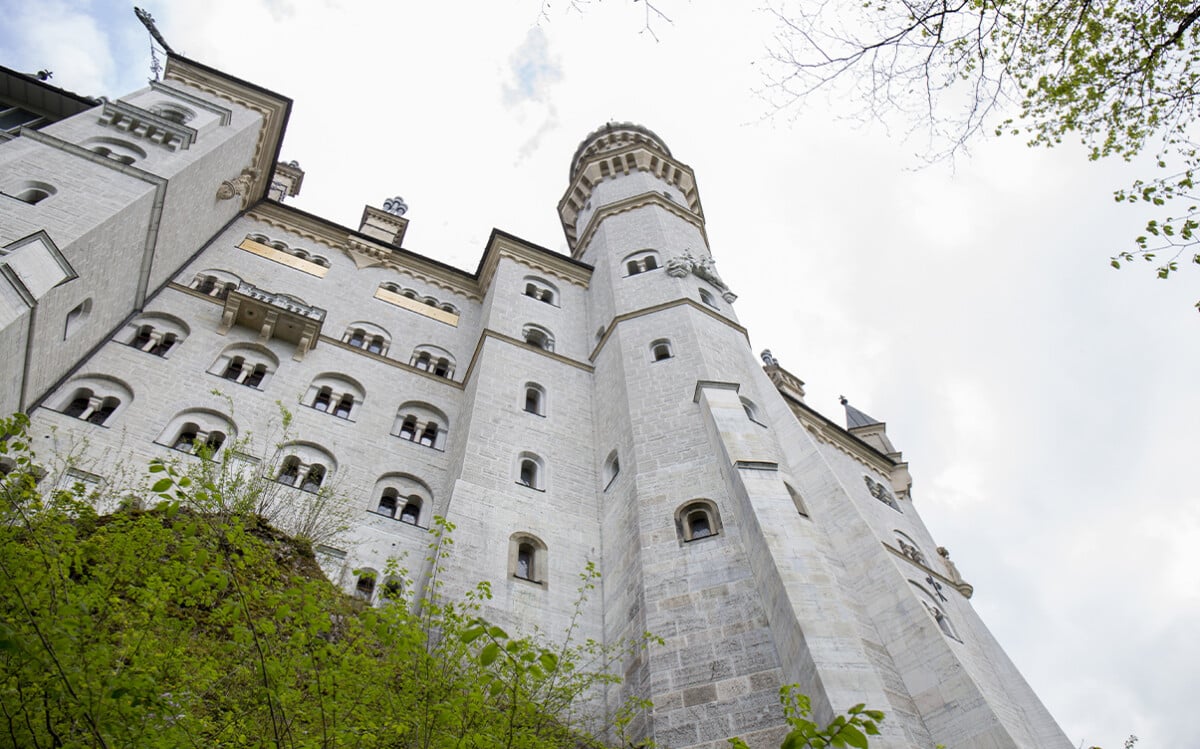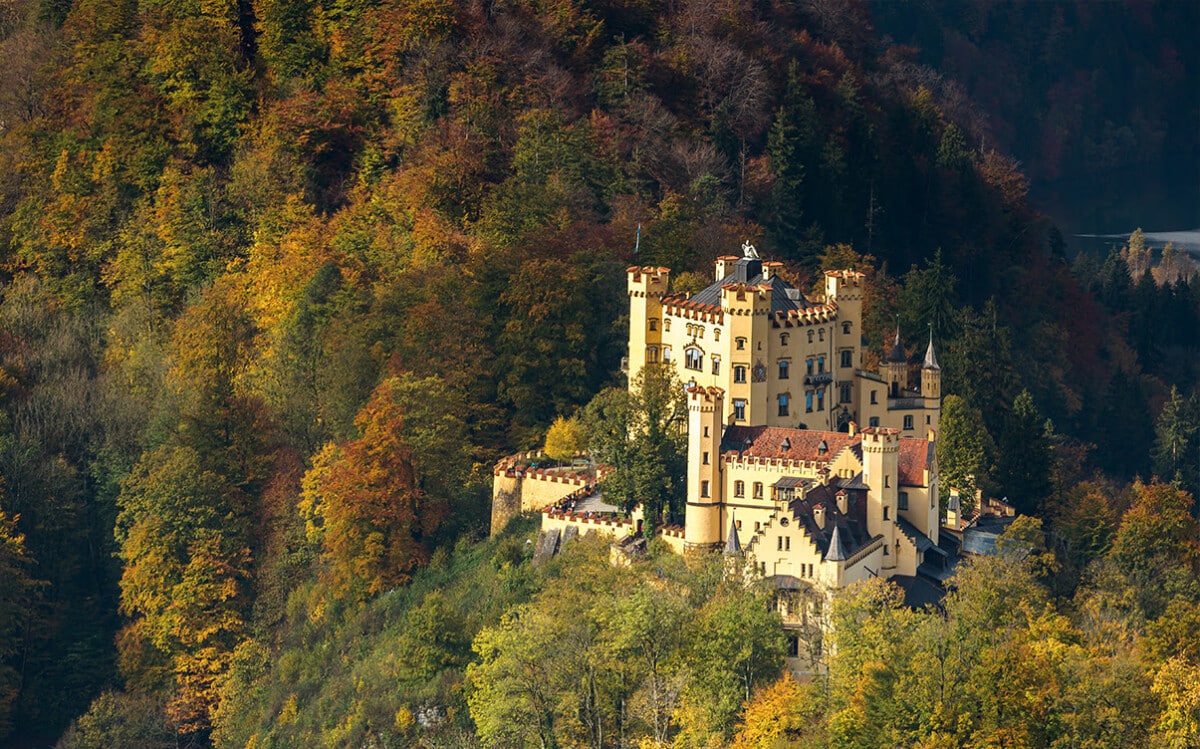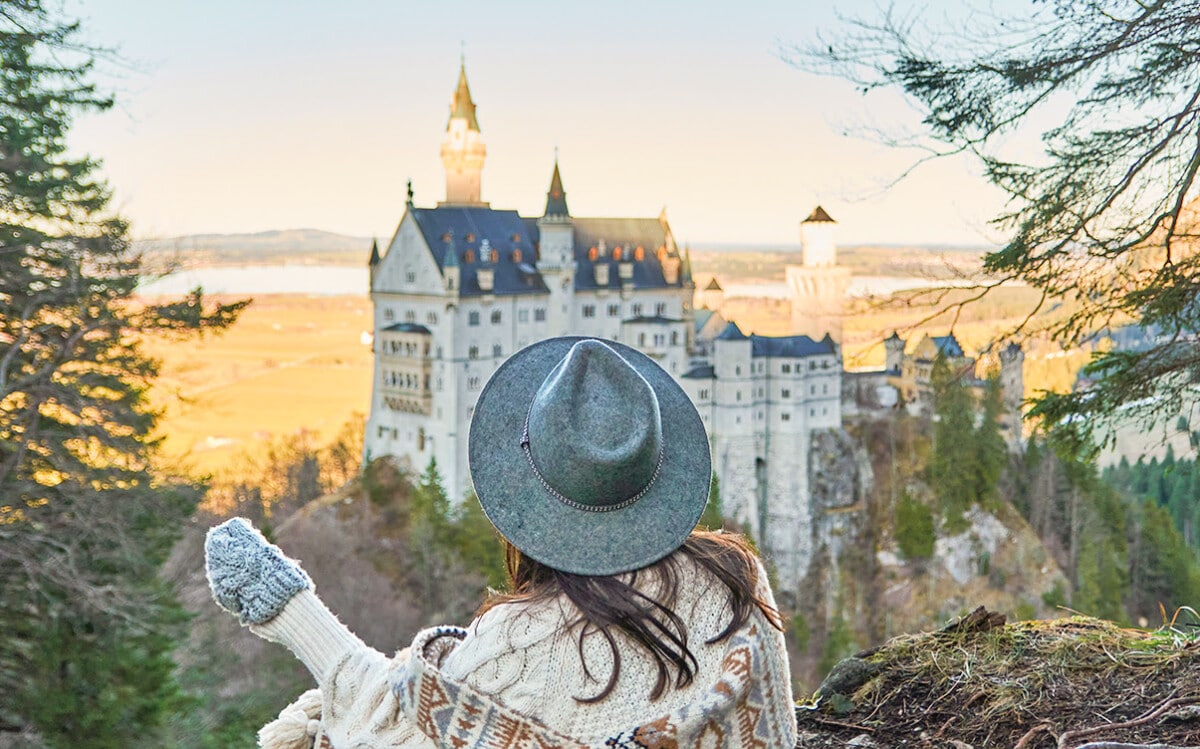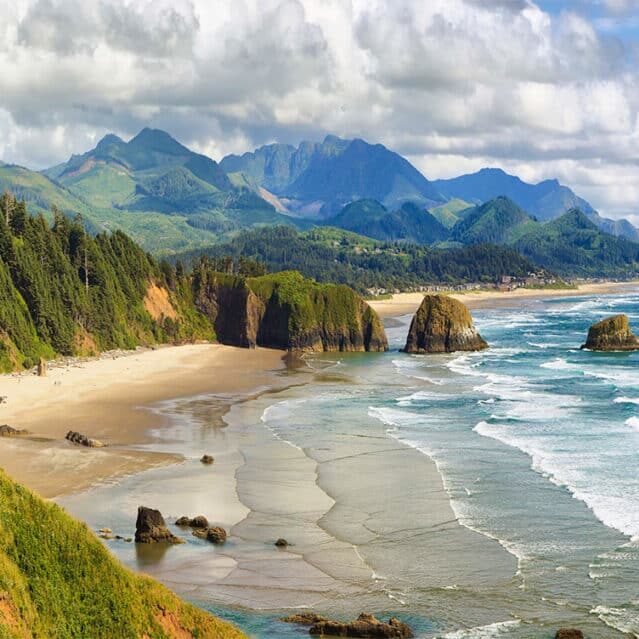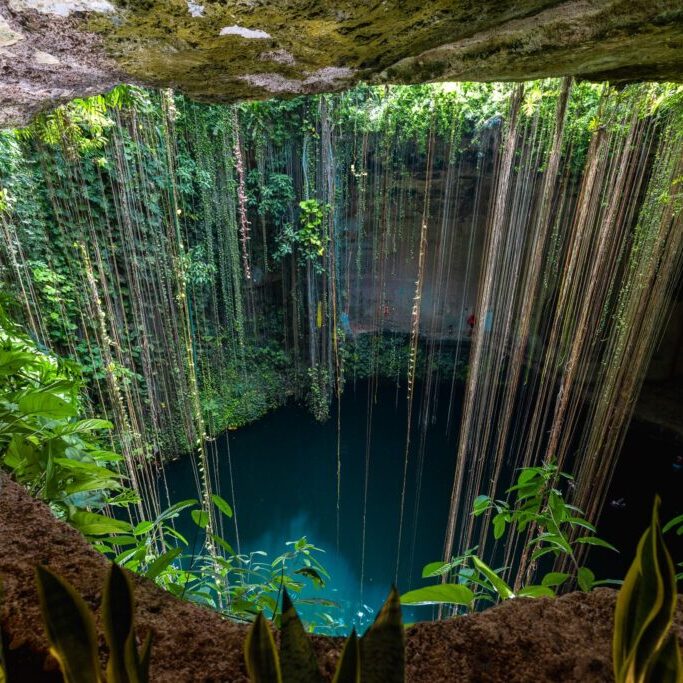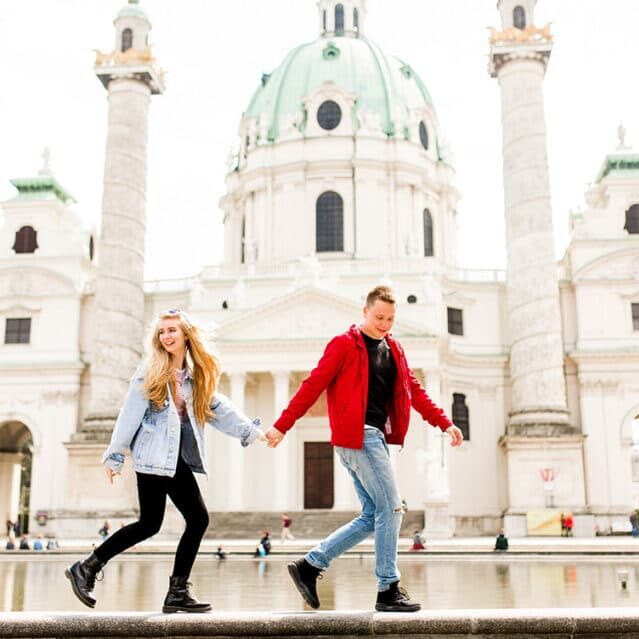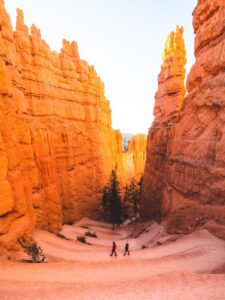How to Visit The Neuschwanstein Castle from Sleeping Beauty
Disclaimer: This post may contain affiliate links. Please see our Disclosure Policy and Advertiser Disclosure for details.
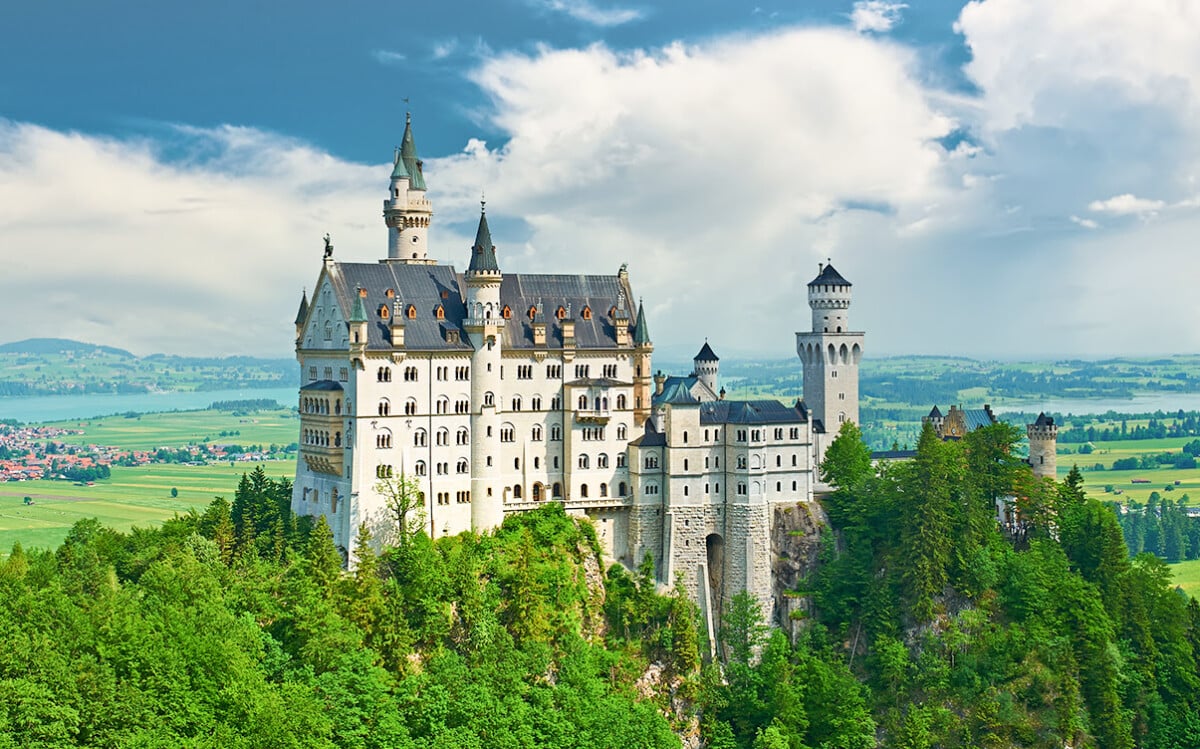
Sleeping Beauty is a classic film based on an even older tale, and it still holds up today. The more adventurous viewers like us, though, aren’t just watching it for the story or the nostalgia. For example, did you know that the castle featured in the movie – which became the iconic castle of Disney itself and the centerpiece of Disneyland – is based on a real place?
If you want to visit the castle from Sleeping Beauty, you’re going to have to book a flight and hop on a plane to Germany. It’s a wonderful little adventure that can be done on a weekend, so let’s talk about it!
What’s the History of Neuschwanstein Castle?
In the far-off years of the late 1800s, a king reigned in the region known as Bavaria. This king, a young man named Ludwig Otto Friedrich Wilhelm, was reported to be quite a character. He was shy and introverted, with a wild imagination and a deep interest in fairy tales and other stories. He hated large social gatherings and state functions. Instead, he preferred to travel the countryside, talking with the people under his rule, and delighted in heaping lavish gifts on those whose company he enjoyed.
Ludwig II of Bavaria became known as the Fairy Tale King, or the Swan King, and in other locations outside of Bavaria as the Mad King for his proclivities and unusual style of reign. Among other things, he’s known for sponsoring Wagner and other theatrical greats, but one of his most enduring contributions to Bavaria is the series of elaborate and fanciful castles he had constructed.
Neuschwanstein Castle is one of the enduring landmarks of Bavaria and has survived an immense amount of turmoil in Europe over the decades. Though its location was unimportant for both World Wars, it was used as a depot to store stolen art and artifacts by the Nazis, who also considered blowing it up! Fortunately, that didn’t happen, and it survived to inspire Walt Disney and others in the production of Sleeping Beauty. Today, the castle stands tall as a tourist attraction and a key part of Bavaria’s history.
Where is Neuschwanstein Castle Located?
To find Neuschwanstein Castle, you first start with a map of Germany. Bavaria is the largest German state, making up much of the southeastern quarter of the country, so you zoom in there. In fact, finding Munich is a good start. Neuschwanstein Castle is further south and to the west, though, all the way to the border between Germany and Austria in the Alps. From Munich, follow 96 west until you can turn on 17 heading south, which will eventually take you to the town of Schwangau, where two famous castles can be found.
Or, of course, you can just consult a map.
How to Visit Neuschwanstein Castle
If you’re interested in visiting Neuschwanstein Castle to see fairy tales come to life, you have two real options.
The first is to book a trip to Munich. Munich is a larger city with plenty to see and do and ready accommodations for any world traveler. It’s about a two-hour drive or a four-hour train ride away. You can easily get to the castle via the roads, a train, or even a tour. You could also choose to stay in Zurich, Switzerland, though it’s a three-hour drive to the castle and is a more complicated, cross-border experience.
The second option, and the one we recommend, is to stay in one of the smaller villages near the castle itself. Hohenschwangau – the location of the other castle in the area and just a short distance from Neuschwanstein Castle itself – is a tourist town full of English signs and a veneer of fake history, so much so that it feels more like the Disney reproduction than it does an authentic Bavarian village.
Slightly further away, Schwangau (yes, it’s not the same thing as Hohenschwangau) or Fussen are both great options. They’re less crowded, less touristy, and more authentic, but still an incredibly short distance from the castles.
Touring the Castle
If all you want to do is visit Hohenschwangau and see the Sleeping Beauty Castle perched high on the hillside above the town, you’re certainly free to do so. But we all know you want more than that, right? It’s an authentic fairy tale castle! Who wouldn’t want to wander those halls and tour the building?
Unfortunately, you can’t freely wander the halls. You’re required to buy a ticket and take a guided tour through the castle. As an immensely popular tourist attraction, these safeguards are in place to prevent damage, theft, and undue wear on the castle that would harm its longevity.
Since you need to buy tickets, we recommend buying them online in advance. You can find all the relevant information on their website here. You can purchase up to about three months in advance.
Be warned: tickets tend to sell out quickly, so you’ll want to book them as far in advance as you can and build the rest of your itinerary around the trip. There’s the occasional added availability of buying tickets in person starting at 8 a.m., but they aren’t guaranteed, and they’re very limited if you can get them, so don’t rely on them.
As for tickets, they can’t be returned or exchanged, and you need to book a specific tour slot for the castles. The museum in the area – more on that later – can be visited any time it’s open on the day you have tickets. You do, however, need individual tickets for each castle and the museum. Tickets to Neuschwanstein Castle are €20.50 per adult, or about $22.50.
Is the tour worthwhile? That’s a personal judgment. Some people don’t much care for old art and architecture and are there to see the impressive vistas and views. They may be unimpressed by the castle décor. The tours themselves are rather terse since a lot of the information you’d usually find in them is instead in the museum. Still, it’s a unique experience, and really, who travels all the way to see a castle without going inside when the opportunity to do so exists?
Neuschwanstein Castle and Surrounding Area Advisories
The same website that sells tickets also has advisories for the state of the castle and the other attractions in the area. Make sure to check back when you’re nearing your visit to make sure nothing you planned to do is closed.
For example, as of the time of this writing:
- The hiking trail around Lake Alpsee is closed, though it’s scheduled to be open later this month.
- Shuttle buses aren’t in service, so you have to drive, take a private taxi or conveyance, or rent a horse carriage up to the castle.
- Some portions of the castle are closed for renovations until some unspecified time this year.
- The incredible cross-gorge bridge Marienbrucke is closed (as it is very dangerous when there’s ice and snow). Similarly, the hiking trail in the gorge below is also closed.
Depending on when you visit, some of these may be open or completed, and there’s always the possibility of other advisories, so check back to make sure what you need to plan for.
What’s it Like Visiting the Castle?
Depending on when you visit, your experience may vary. Peak times are in the summer, of course, since more attractions are open and the weather is nicer. You have to wait in line to pick up your tickets, but that line is mercifully short, only 10-15 minutes on average.
Once you’re there, you’ll have the specific time slot for your tour given to you. You pick a time, but times are flexible, so you may book a tour in the 1:00 p.m. time slot and be given 1:25 p.m. as your start time. Plan appropriately!
The actual tours of the castles themselves are relatively short. When over 6,000 people can visit the castle in a day, they need to keep things moving, after all. You can linger a little, but not much, and the whole tour of the castle will generally be around 30-45 minutes long.
This is for the interior. You can spend more time – as much as you like – exploring the surrounding area, taking photos, and enjoying the atmosphere.
What Else Can You Do in the Area?
Above, we mentioned two other things: another castle and the museum. These aren’t the only things you can do, but they’re the two other major ticketed attractions.
Here’s a rundown of other things you can do in the area besides just a tour of Neuschwanstein Castle:
- Hohenschwangau Castle. This is the older, smaller castle where Ludwig spent much of his childhood and where he dreamed up the location and design of Neuschwanstein. It’s less impressive than Neuschwanstein, so plan to do this one first if you want to do both.
- Museum of Bavarian Kings. This excellent museum is full of Bavarian history, including plenty of information about Ludwig II. It’s a great capstone to your castle tours.
- Mary’s Bridge. Marienbrucke is a tall bridge suspended across Pollet Gorge, where you can get some incredible views of both the countryside and the castle. Be warned, it’s a scary bridge, so stick to the ground if you have a fear of heights.
- The Castle Gardens. All of the surrounding areas are gorgeous and full of art, so there’s plenty to do to spend time outside of the castles and their tours.
- Hikes and nature experiences. There are several hiking trails, like through Alpsee and Pollet Gorge, which can be gorgeous experiences all on their own. Truthfully, many people visit more for nature than the castles! There are some beautiful alpine lakes to see and even swim, though they’re quite frigid even in the summer.
- Visit Hohenschwangau. Not just the castle, but the town around it is a full-on tourist trap for all the American Disney fans and world travelers. That means there are all kinds of things to do there, from chintzy gimmicks to authentic Bavarian history.
And, of course, there are a ton of different things you can do in your base town, whether it’s Fussen, Schwangau, or somewhere as far afield as Munich.
Tips for a Successful Trip to Sleeping Beauty Castle
Preparation is key for any trip to make sure it goes well, and a trip to a tourist destination like Neuschwanstein Castle is no different. The tourist village nearby does mean you have a bit more forgiveness if you forget something like a good pair of sunglasses, but you should still make sure you’re prepared.
First of all, you’ll be doing a lot of walking and wandering, even if you aren’t planning to do the nature hikes. Good shoes – and good hiking shoes if you’re venturing into nature – are an absolute essential; otherwise, your feet will be killing you by the end of the day.
Weather protection, as well, is always a must-have. Whether you’re visiting in the off-season and need to deal with winter chill and snowy hiking, or you’re visiting in the peak of summer and have the beating sun and high temperatures to contend with, you need to prepare. Sunscreen, appropriate clothing, a good hat, and other apparel are a must.
One thing to note is that there are stairs in these castles. Neuschwanstein has an elevator and can be traversed in a wheelchair, but Hohenschwangau cannot. There are also particular routes you’ll want to avoid since there are some steep climbs on the trails.
Important note: photography is forbidden inside the castles. In fact, they may even ask you to leave things like backpacks by the entrance! There’s a reason the only photos of the interior are professionally taken photos from the Bavarian Palace Administration; it’s specifically forbidden.
You can take photos of the exterior, of course, and anywhere on the grounds and the trails. Drone photography is forbidden, though, but that’s not a huge surprise; it’s prohibited in most tourist attractions. Leave the drone behind, take your selfies of the impressive exterior of the castle, and take the tour to experience the interior.
You can easily spend a whole day exploring the area, and longer if you want to venture out in the nature trails and hiking paths, so plan for a day – or even two – in the region. We hope you enjoy your trip!
You may also enjoy:
